7.6 /10 1 Votes7.6
7.5/10 TV Country of origin CanadaUnited States Final episode date 27 March 1988 | 7.7/10 IMDb First episode date 1 September 1987 Writers J. Michael Straczynski | |||||||||||||||||||||||||||||||||
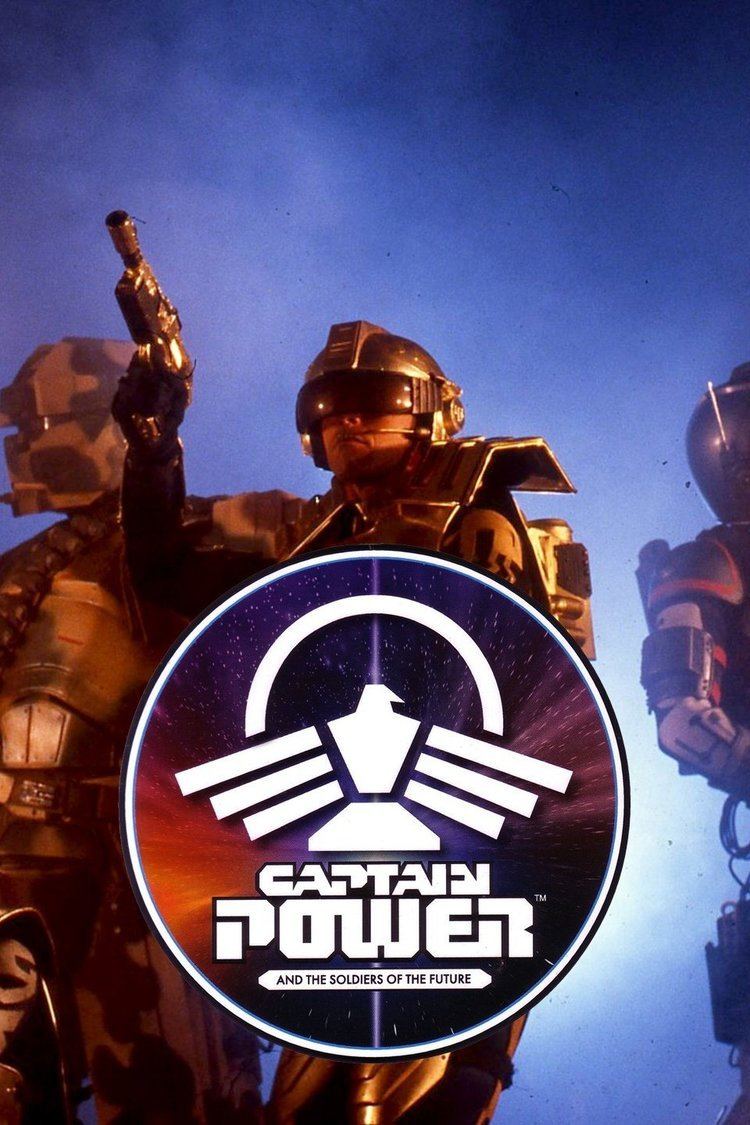 | ||||||||||||||||||||||||||||||||||
Created by Gary GoddardTony Christopher Starring Tim DuniganPeter MacNeillSven ThorsenMaurice Dean WintJessica SteenDavid Hemblen No. of episodes 22 (+3 cartoons and compilation TV movie) Executive producer(s) Gary GoddardTony ChristopherDouglas Netter Cast | ||||||||||||||||||||||||||||||||||
Captain Power and the Soldiers of the Future is a 1987–88 Canadian-American science fiction/action television series, merging live action with animation based on computer-generated images, that ran for 22 episodes in Canadian and American syndication. A toy line was also produced by Mattel, and during each episode there was a segment that included visual and audio material which interacted with the toys. A production of "The Landmark Entertainment Group," Captain Power and the Soldiers of the Future was created by Gary Goddard and Anthony "Tony" Christopher (neither of whom actually wrote any of the stories) and developed by Marc Scott Zicree, with J. Michael Straczynski becoming de facto head writer. Plans to bring the series back, set 15 years after the first series, were announced in July 2016. Goddard’s Goddard Film Group, headed by Gary Goddard, one of the original series co-creators, is one of the development team of the new series.
Contents
General plot
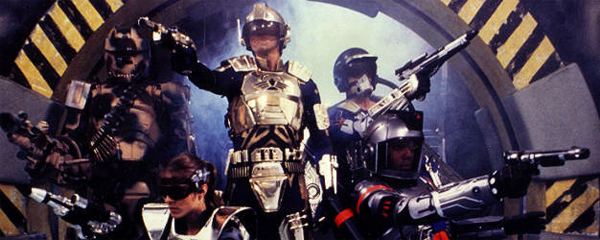
The storyline was set on Earth in the 22nd century following the Metal Wars, a cybernetic revolt that resulted in the subjugation of the human race by intelligent machines. Captain Jonathan Power and a small group of guerrilla fighters, called "The Soldiers Of The Future," oppose the machine forces that dominate Earth.
The central storyline
Each episode began with the following introduction, plus a recap of the storyline:

"Power on." Actor Timothy Dunigan, outfitted in his character's full regalia (one of the "Power Suits" of exoskeletal armor that Robert Short Productions artificed for the cast), turned to the camera and delivered this line.
Voiceover artist Brad Crandall:
By the year 2132, advanced robotic soldiers known as "Bio-Mechs" had replaced humans in the armed forces of the world's nations. The existence of Bio-Mechs meant that wars could be fought without significant loss of life, allowing turning war into a nearly harmless battle between machines. A group of scientists, led by Dr. Stuart Gordon Power (Bruce Gray), had begun working on an advanced supercomputer, called OverMind, capable of overriding the control systems which the world's armed forces used to operate the Bio-Mechs, and thus stop them, bringing an end to war. It required an equivalent to human brain patterns to become operational. But Dr. Power's closest associate, Dr. Lyman Taggart (David Hemblen), became impatient with the slow pace of the project and hooked himself up to the system, bringing the supercomputer to operational status.
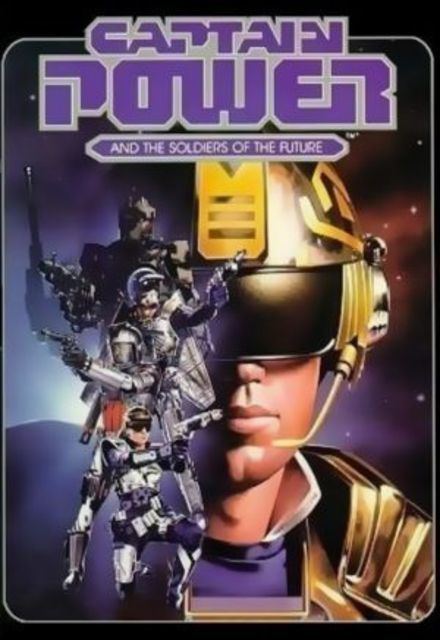
With the new opportunities offered by the human-machine combination, Taggart becomes obsessed with the precision and "perfection" of machines and convinces himself that merging human consciousness with mechanical bodies is the next step in human evolution. OverMind achieves self-awareness and shares Taggart's beliefs as they take over Bio-Mech armies throughout the world and attack humanity in a conflict known as the Metal Wars.
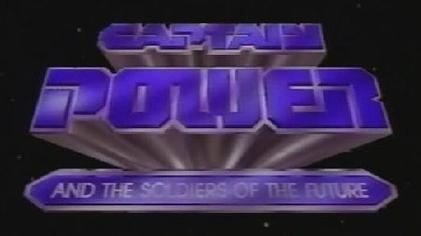
World governments turn to Dr. Power for find a way to stop Taggart. He develops the "Power Suits," a combination of exoskeletal body armor and advanced weapons and prepares a number of prototypes for testing. However, Power apparently dies trying to rescue his son Jonathan from Taggart, though Jonathan is convinced that his father is still alive somewhere. Taggart himself is severely wounded, and OverMind saves him by implanting cybernetic mechanisms into his body, eventually calling himself Lord Dread.
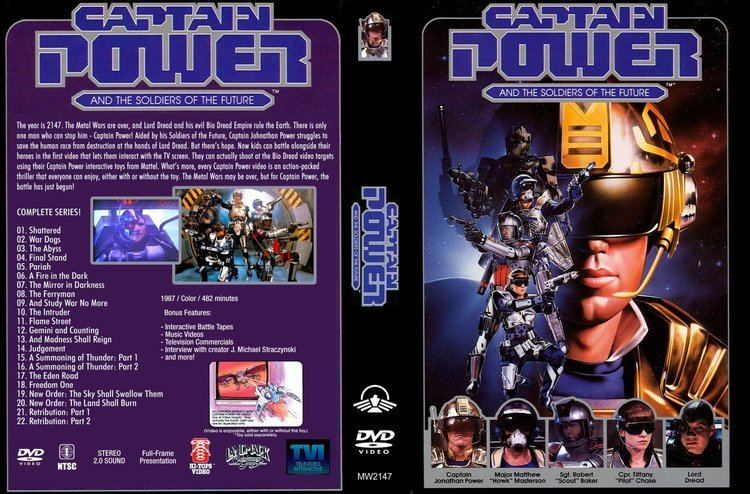
By 2147, 15 years after the Metal Wars broke out, humanity had been largely annihilated by Lord Dread's forces, and those who survive live miserable existences in hiding lest they be discovered by Bio-Mechs and "digitized" as virtual beings within OverMind. Advanced Bio-Mechs called Bio-Dreads and humans loyal to Dread carry out the extermination, as Dread rules from his headquarters in Volcania, somewhere in North America.
Despite the dire situation, a number of human forces band together and fight the Bio-Dread Empire. One of the leading human resistance groups, Jonathan Power's "Power Team," uses his father's Power Suits to mount attacks on Bio-Dread forces. They stage out of the "Power Base," an abandoned NORAD installation in the Rocky Mountains, and are guided by a supercomputer programmed with Mentor, an artificial intelligence whom Dr. Power designed in his own image and voice to guide his son and the group. It is later revealed that there are human resistance groups in other locations.
"Project New Order"
During the show's only season, there was a story arc involving Project New Order, Lord Dread's plan to eradicate human life and develop his ideal world. The plan consisted of four stages:
Captain Power's group uses a system of teleportation portals, called "transit gates," both to move quickly around North America and to keep their base's location secret. However, at the conclusion of the first season, Lord Dread breaks the gates's access codes and sends forces to assault the base. Power and most of his team escape the facility, but Corporal Jennifer "Pilot" Chase, a former member of the "Bio-Dread Youth," is trapped and activates the base's self-destruct mechanism, killing herself and the Bio-Dread troops.
J. Michael Straczynski was the writer of the last episode of the series. He commented about Pilot's death, revealing that the scene was inspired by an especially tragic event in his own past.
"I've never talked about this before—said I was in a thoughtful mood—but I've known several people, friends, who've taken their own lives. In one case, I spoke to her just beforehand. Tried, through the phone lines, to reach her one more time, pull her back from the edge. I couldn't. Years pass. Time comes for me to write the last filmed episode of Power."'
He added:
"Jennifer Chase is going to die, partly of her injuries, partly of her own volition. Part of my life went into that scene, in the way it was constructed, and what was said. And what was not said, what never had the chance to be said, and thus still burns. I knew that, at the crucial moment of that scene, he couldn't be near her, as I wasn't near my friend...it had to be long-distance, hearing but not seeing her, and the terrible pain of arriving too late. I cannot watch that episode without crying. Ever."
Proposed second season
The second season focuses on an anguished Captain Power neglecting his duties as the leader of the team and obsessed with killing Dread and Locke, the slicer who had betrayed them in the previous season finale, to avenge Pilot's death. Major Hawk would have assumed more leadership roles as Power goes off on his vendetta. Two characters were to have been introduced: Chris "Ranger" O'Connor, a woman who would be Tank's love interest and Private Chip "TNT" Morrow, a soldier who had appeared in the first season under the name of Andy Jackson.
The plot also covered the team's quest to find "Eden II," a supposed secret human refuge mentioned in the first season, while setting up a base of operations on a facility that was the prototype of the Power Base. Lord Dread would have gained a new mechanical form, as actor David Hemblen was not required back let alone, perhaps, for voice work. His new army would have consisted of "Hunter-Seeker" troops and a new Warlord-class Bio-Dread called Xenon. Dread would also have gained a new assistant called Morgana II, a machine with the mind of his former lover – who would have proven to be Jonathan Power's mother.
OverMind would have taken a larger role in the war and revealed a hidden agenda: after digitizing all the remaining human beings, it would erase them from existence. Wanting to keep this secret from Dread, the plot would have seen the AI give Soaron secret programming to assassinate Lord Dread in case he suspected anything.
In the recent DVD release, series head writer J. Michael Straczynski reveals that the planned end for the series was Lord Dread learning of OverMind's hidden agenda, and as a result, teaming up with Captain Power to free all of humanity from OverMind.
Adult storyline
A great majority of the show's story line was filled with romance and intrigue, which was made for the adults who watched the show with their children. Thus, the story was filled with romantic kisses, sexual innuendo, and occasionally scenes which implied sexual encounters between characters. Mild profanity was also present; "damn" was said on at least one occasion, and Pilot told Blastaar to "go to hell" in response to his order to surrender. In addition, the violent death of one of the major ongoing characters in the series (detailed above) was also an unusual development for a children's series. The inclusion of a "Bio-Dread Youth," which recruited young survivors to Lord Dread's ideals to further advance his agenda, also paralleled the National Socialist and Communist regimes.
Criticism and cancellation
Captain Power attempted to appeal to both children and adult audiences, with its dark, post-apocalyptic storyline showing the aftermath of nuclear war and featured allegories on topics such as Nazism. Ultimately, however, this became the show's undoing. It was seen as too violent for children because of its toys for shooting at the television and live-action violence. Its less mature aspects, such as the title, drove away adult audiences. Other factors contributing to the show's failure included the higher cost of a live-action show (each episode cost an estimated $1 million to produce) compared to the cheaper production costs of a cartoon, as well as the fact that the gameplay between the show and the toys was extremely poor. Poor transmission time-slot choices also contributed to the show's cancellation: it was sold to syndication as opposed to a regular network time-slot, which resulted in some television stations airing it in the 5-6am time-slot on Sunday mornings. The subsequent poor ratings hastened the show's demise. In an article from Starlog #128 written by Marc Shapiro with quotes from one of the writers of the show, Larry DiTillio, there are the following statements:
But for all those noble sentiments, Captain Power, to the public at large, is perceived as just another excuse to sell toys. It is a notion that rubs story editor Larry DiTillio the wrong way.
"We're not writing stories with the idea of turning each episode of Captain Power into a video game," declares DiTillio. But DiTillio, a first season staff writer who became story editor when J. Michael Straczynski (Starlog #111) left the position for a similar post with the revived Twilight Zone, claimed that ramrodding the script side of Captain Power hasn't been easy.
"This show has definitely not made my life easier," chuckles DiTillio. "This is not just another kid's cartoon show. The writing is always to an adult level. There is the interactivity which has been centered mainly in the battle sequences but we aren't in a position of having to write X amount of animation and interactivity into each episode. I want to make it very clear that around here, we're working for the story."
There is a tone of desperation in DiTillio's voice as he defends the writing integrity of Captain Power. It's a desperation resulting from dealing with cliché story submissions that have come streaming in amid the confusion about how childlike or adult Captain Power is. "People are coming in with the same old stories," DiTillio laments. "I'm getting Star Trek, Star Wars and Terminator. If I wanted another Terminator, I would call James Cameron."
In a subsequent Starlog article a year after the cancellation, DiTillio cited many reasons for Mattel cutting off the show's funds, resulting in the show's cancellation: "Mattel's tie-in toys didn't sell up to expectations, parents group charges that the show was too violent, and having to shell out Screen Actors Guild and Writers Guild residual payments because Captain Power was live-action."
J. Michael Straczynski commented about the show's cancellation and the planned second season.
Re: Captain Power "...Yeah, that's a show that is an example of what to strive for, and how sometimes good intentions can get derailed. We genuinely wanted to come up with a long-term story, and by and large, we succeeded. The problem was the marketing in front of the show, and the merchandising behind the show...we got killed from both sides."
"There's an entire second season of unproduced CP scripts, story edited by Larry DiTillio, in which he follows up on the arc that I and others established during the first season. You would have found out what Dread became, what happened to Power's mother, where Eden was (and there would be direct contact), what the secret was in Soaron's programming, and so on."
In 1987, Captain Power was one of the targets of anti-toy related children's television advocates who claimed that the series focused on selling children expensive toys for full participation.
Action figures & interactive game
A line of toys and interactive television games were released by Mattel. Some ships and playsets, when firing at the screen, could interact with various segments of the Saturday morning TV program.
The first interactive toy and game for the series was a toy XT-7 jet with a video cassette. There were three tapes: "Future Force Training," "Bio-Dread Strike Mission," and "Raid On Volcania." The tapes featured live introduction and end segments with the cast of the television show. The actual mission itself was animated and took place in the jet cockpit from the first-person point of view of the pilot/player. Players would hold the toy jet and face the screen. The toy was actually a sort of light gun that responded to signals from the television playing the tape. The toy jet would get points by firing at appropriate targets on the screen and lose points when the sensor on the jet got "hit". Upon reaching zero points, the cockpit would eject automatically. Since the "game" was only a VHS tape, the missions always played out the same way. The toy could also interact with the live action television broadcast in the same manner. Other interactive objects in this series were the "Phantom Stryker" Bio-Dread ship, the "Interlocker Throne" for Lord Dread, which consisted of a stationary tank on a tripod and an optional target viewer that could be taken on and off, and the "Power On" platform, which the user could plug the Captain Power figure into. Whenever the transformation was triggered on screen or the base was fired at by one of the other vehicles, the toy would immediately trigger the "Power On" sequence causing the chest of the figure to glow.
In 1988, a second and slightly more scarce series was released. The release of the Dread Trooper and Dread Commander is uncertain. Pictures of these figures were shown in the Mattel dealer catalog.
Season 2 (unproduced)
Scripts for a second season were commissioned and written, but the season was never produced. Twenty-two scripts were assigned, but that number was later reduced to 18.
Characters
A promotional video produced months before the series aired featured a sixth "Soldiers of the Future" member, Colonel Nathan "Stingray" Johnson, a specialist in seaborne operations. In the recent DVD release, series creator Gary Goddard reveals that the character of "Stingray" Johnson was cut shortly before the series went to production, simply because Landmark Entertainment was unable to afford to build a water tank to film aquatic battles.
Voice actors
Comic book
The show also spurred a short-lived comic-book of the same name, published by Continuity Comics in 1988–1989, illustrated by Neal Adams with stories by J. Michael Straczynski, who was also the series story editor, writing half the episodes and providing stories or outlines for many more.
DVD release
The official Captain Power page on Facebook announced on September 9, 2011 that the complete series would be released on DVD.
On December 6, 2011 the complete series was released on a 4 disc DVD set in region 1. The set contains all 22 episodes plus much bonus material including interviews and commentaries with cast members.
Reboot: Phoenix Rising
On September 28, 2012, Ain't It Cool News announced that series creator Gary Goddard was in the process of reviving the series. The new series project, titled Phoenix Rising, uses the original rising Phoenix symbol of the Captain Power franchise, though the motif has been slightly altered. The series would be a one-hour weekly drama, looking at both sides of the post-apocalyptic conflict, starting with the origins of characters, which were only touched upon half way through the first season. As of September 29, 2012, no networks or cable channels have been announced as being a part of the project, nor have any casting choices been revealed. On board with the project are writer/producers Judith and Garfield Reeves-Stevens who have been tapped to develop the revival/reboot of the franchise. Stephan Martinière is heading up the conceptual art for the show. A 2014 interview revealed that, despite delays, the revival is still in the works. In September 2015, Deadline reported work on the reboot was still progressing.
An announcement teaser for the new series was uploaded to YouTube on July 18, 2016 with the show making an appearance at the 2016 San Diego Comic-Con.
Video game
There is a video game for Captain Power and the Soldiers of the Future, published by Box Office Software in 1987 for the PC, and 1988 for Commodore 64.
